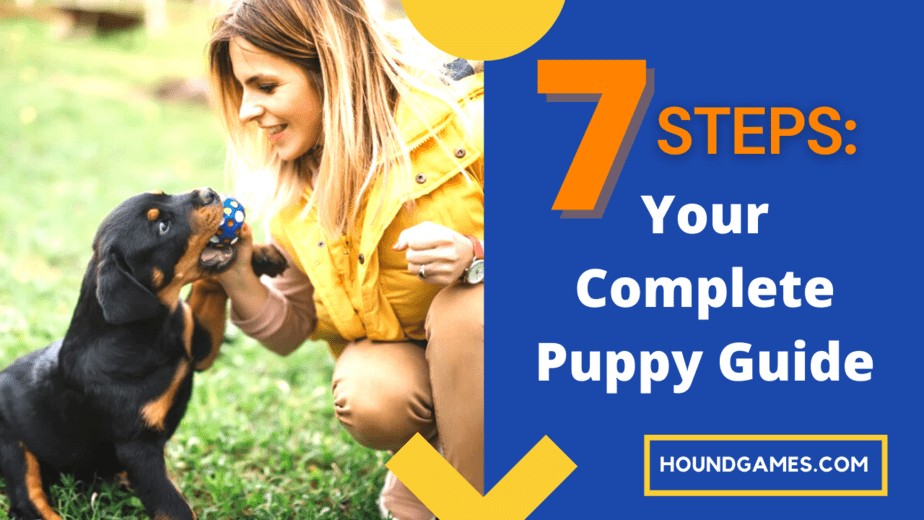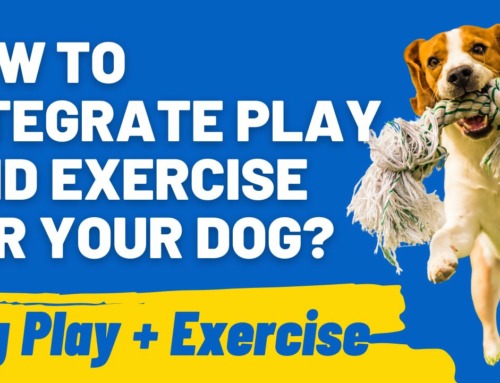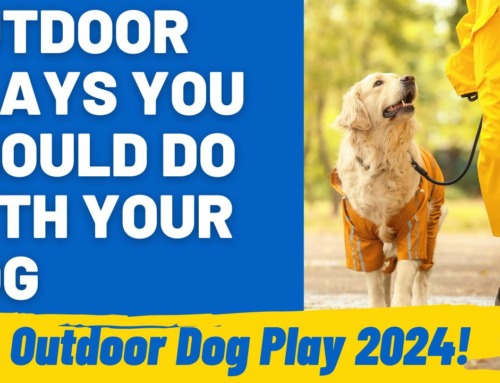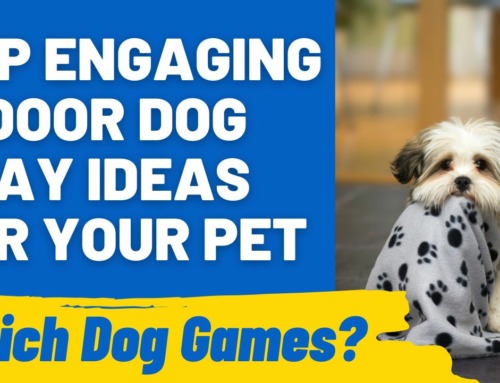There are seven fundamental steps of raising a successful puppy. When a puppy is raised without addressing these steps, they can find themselves with long lasting unwanted behaviors.
In this puppy mega-post, we’ve written out everything you need for your puppy to succeed. We recommend printing the whole thing out and having everyone in the household read it. It is important owners are on the same page when it comes to raising a puppy so they don’t get mixed messages.
The 7 steps of puppy success are as follows:
- Socialization
- House-training
- Crate Training
- Training Commands
- Leash Walking
- Routine and Unwanted Behaviors
- Puppy Exercise and Play
In this guide we will be addressing each one and what you should be doing as a puppy owner to ensure they have the tools to become an amazing dog.
Let’s get started!
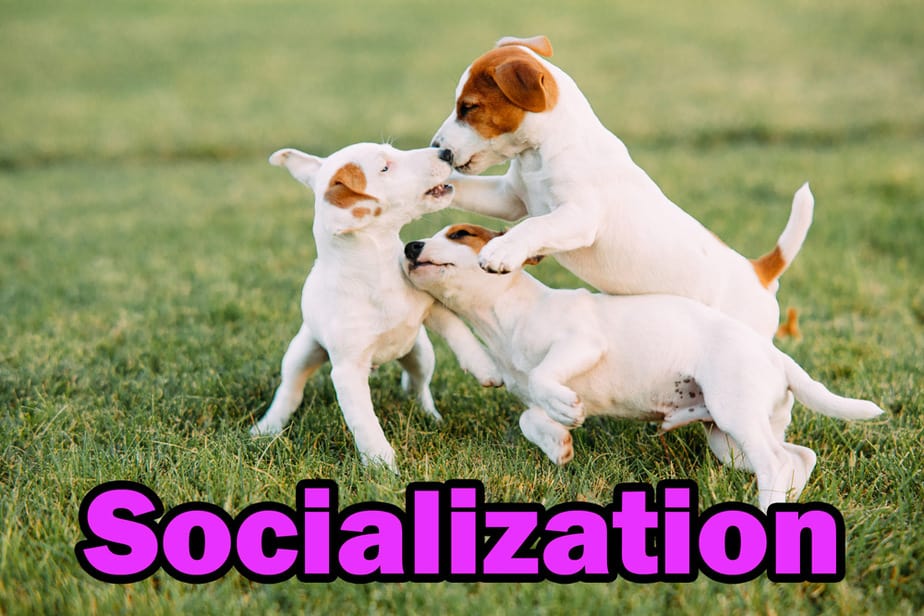
Socialization for Puppies
Although our list isn’t strictly in order of importance, we did lead off with what we consider the most influential step in your puppy’s life.
Socializing your puppy in their early stages will have a huge impact on the way they interact with other dogs and people in future – which means for many years to come!
The “critical window” for puppy socialization is considered to be when your puppy is aged between 12 and 16 weeks old.
Because of the short duration of this window, this should take priority over all other steps in the 7 steps of puppy success.
Although this is the critical window of time, this doesn’t mean they won’t benefit greatly from socialization outside of this window – especially in their first 6 months.
You should be taking your puppy to puppy school and we have a post here that might interest you: PetSmart VS Petco: Puppy School and Training Comparison
Benefits of Puppy Socialization
- Learn bite inhibition
- Learn boundaries
- Become comfortable with strangers
- Become comfortable with other dogs
- Become comfortable with noises
- Become comfortable with handling by others/children
- Become comfortable with different locations
- Exposed to a variety of smells
From the moment you get your puppy home, you should be thinking, “Right, let’s get him/her around other puppies, dogs, children, and adults.”
This means getting them in the car and out and about to varying locations and circumstances.
You might be asking, “But what about parvovirus?” and this is a legitimate concern. You’re going to need to take calculated risks – you can’t shelter your puppy for fear of parvo when socialization is paramount to your puppy’s success.
Use these steps to socialize your puppy:
Avoid these situations when socializing your puppy:
- Public parks
- Dog parks
- Dog beaches
- Strange dogs you don’t know are vaccinated
- Pet stores
- Veterinarian clinics (of course you will need to take your puppy to their vet, but hold your puppy and don’t let them interact with other dogs there)
Your puppy can catch parvovirus from the locations other dogs with parvo have been. This means they shouldn’t be walking around in dirt or grass in public areas until their vaccinations have finished.
You can read our post Where Can a Puppy Catch Parvo? (Complete List) for more information on this subject.
TIP: Never force your puppy into a situation they don’t seem to be enjoying, as this can have the opposite effect of what you’re trying to achieve with their socialization.
Also, be sure to read our post on Puppy Separation Anxiety: A Complete Guide to ensure you avoid socialization mistakes.
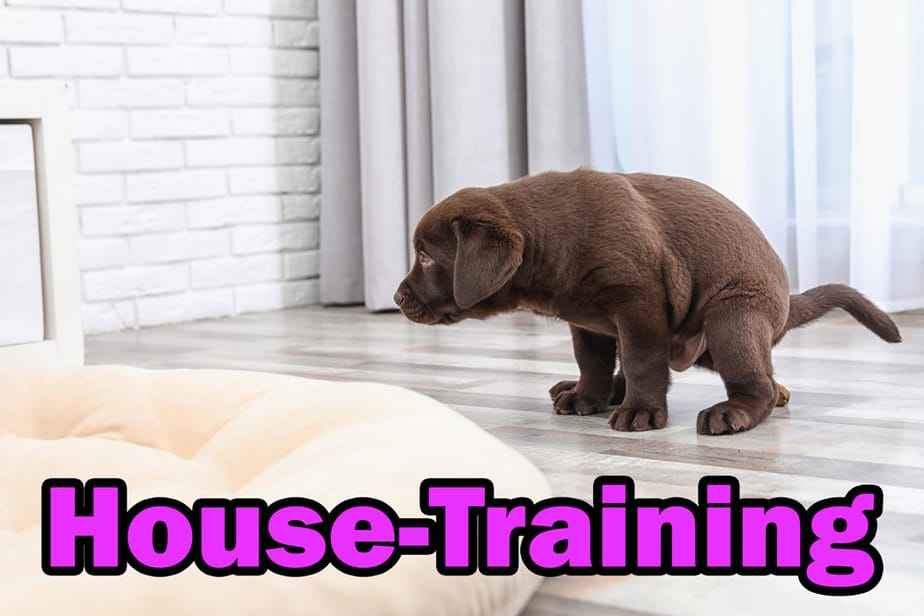
House-training your puppy
This saying sums up house-training a puppy:
“Patience is when you’re supposed to get mad, but you choose to understand.”
It can be frustrating through this period as there are often regressions, and many accidents – sometimes on your good carpet!
If you ever feel you need to discipline your puppy, be sure to read our comprehensive guide on puppy discipline.
This process can be trying, especially if you’ve got a stubborn puppy, who seems to not be getting the whole house-training thing.
And if this is you, we have a post Puppy Still Not House-trained: Age expectations which you may find helpful.
Steps to successfully house-training your puppy:
Supervision is key
The more you have an eye on your puppy the more success you will have. When you’re watchful of your puppy you can be sure to see the following signs of pre-toileting:
- Sniffing around
- Circling
- Straight tail
- Squatting
When you see any of these signs, get to them quickly and take them outside.
If you see your puppy in the act of doing their business, make an interruption noise. This can be a high-pitched squeal, clapping hands, or saying “Ah-ah!”.
Treat to success
Your puppy needs to know when they’ve done the right thing. Whenever they go to potty outside, treat them generously and praise them.
TIP: It’s a good idea to have a supply of treats somewhere outside where you can easily access them, out of reach from your puppy, of course.
Know when it’s time for your puppy to go to the toilet
Your puppy will always need to go to the toilet in the morning. When they wake up, take them straight outside.
When they go, give them the treats and praise their efforts.
Within 30-minutes of eating, your puppy will need to go. So be sure to watch them closely during this time or take them outside in this window.
Again, take treats with you ready to praise their success!
After vigorous playing, your puppy will need to go. Spend time playing with your puppy outside and be ready for the act so you can give them treats. If you’re playing inside, watch for them to start sniffing around.
Use trigger phrases
If you have a phrase you say whenever your puppy goes to the toilet, they’ll begin to associate that phrase with the act.
Just as your puppy will salivate whenever they hear the kibble bag opening up, they will get the urge to wee when you say, “Wees and poos” or “Toilet time!” or “Take a dump!” I mean, it’s up to you what you want to say – I won’t judge.
The important thing with all commands is you stay consistent.
Use an enzymatic cleaner
If your puppy smells where they’ve gone before, it can trigger them to want to go there again.
Be sure to use an enzymatic cleaner as it will remove the smell. The more thoroughly you clean the area, the more likely you will have removed the previous smell.
Use the smell trigger to your advantage
As these smells trigger your puppy to go to the toilet, you can take a poop, or something they’ve peed on, outside to where you do want them to go.
When they go to these areas, the smell will trigger their toileting response.
Keep them in a restricted area
Puppies are clean animals. “What?!” I hear you say. If you keep your puppy in a small area, they will hold their business to keep their area clean.
As dog owners, we can use this against them. Mwa-ha-ha!
By confining your puppy to a playpen when you can’t watch them, or a crate, or even a single room, they will be less likely to go.
Using a crate during their first six months will supercharge their house-training ability.
It’s important to not abuse crate time, and there’s more information on crate training a puppy in the next section.
What not to do during house-training
- Avoid potty pads – These wee pads that owners layout will actually delay the house-training process. It teaches them it’s OK to wee and poo in the house. It might even become a lifelong potty location for your dog.
- Punishing accidents – Your puppy will only begin to fear you if you punish them for their accidents. This isn’t just for accidents, though. Fear is the number one reason for unwanted behaviors, and so it becomes a self-destructive cycle.
You also might be interested in our post Puppy Won’t Poop Outside: Here’s What to Do
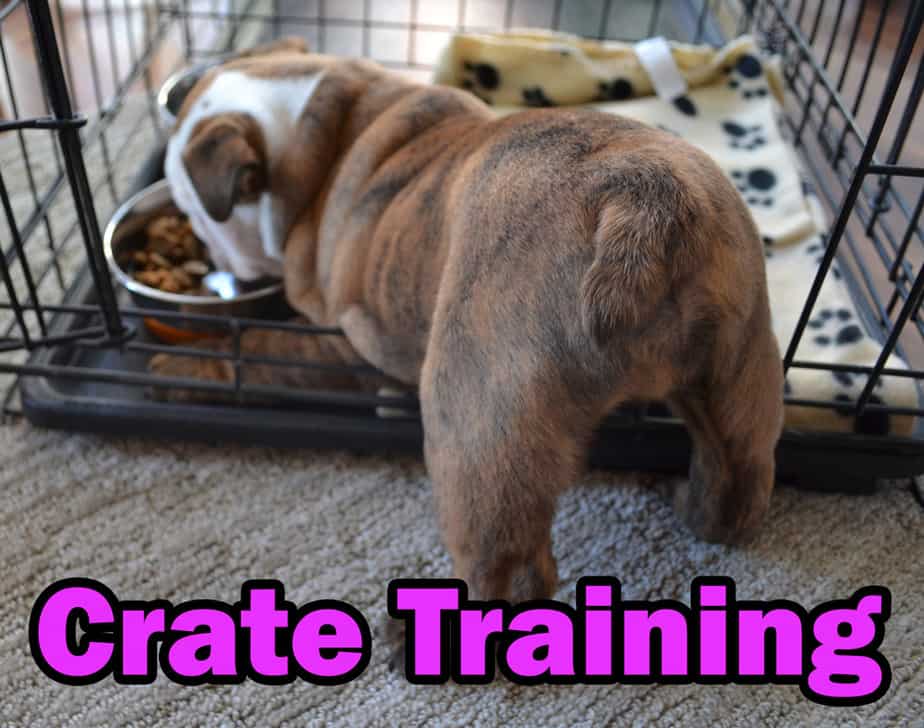
Crate Training Your Puppy
If you’re already crate training, you’re on board with this method and that’s great! But if you’re not, it’s probably because you think it’s cruel, or you may have read something negative about it.
Let me ask you this, how will a dog feel if they’ve never been in a crate before, and then one day they need to go to the Vet and be placed in one, or in a travel carrier?
A crate not only gets them used to the above, but it’s also a key tool in speeding up house-training, reducing unwanted night behaviors, and gives your dog a place of safety when they feel fearful – such as during storms or fireworks.
Think of a crate as a safe haven. Dogs will often sleep up against a piece of furniture or a wall. This is them reducing the space around them to make them feel safe. Which is exactly what a crate does.
But there is a caveat. A crate must always be used as a place of positive interaction.
Your puppy must think of their crate as a place where they get treats, eat meals, play games, and sleep.
If you set them up with their crate to believe it’s the place to be then it will be a blessing to you as a puppy owner.
So, I’ve touched on how to make it a positive place, but let’s go into more detail on crating successfully.
How to set your puppy up for crate success
- Feed your puppy their meals in their new crate
- Leave the door open in the first days when introducing the crate to your puppy
- Leave treats inside their crate
- Put their favorite toys inside
- Interact with them and their toys inside their crate
- Get them to nap inside their crate, and once they are, gently close the door.
- Keep their first crate times short, and gradually lengthen their time spent inside.
- Keep the crate away from thoroughfares inside the home.
Puppies under the age of 6-months shouldn’t spend more than 3-hours at a time in their crate during the day.
Duration in the crate
The below table excludes nighttime crating, and long periods of crate time should be avoided throughout the day.
| Puppy Age (months) | Bladder Control (hours) | Total Daily Crate Time (hours) |
|---|---|---|
| 2 | 1 | 1 |
| 3 | 2 | 1 – 3 |
| 4 | 3 | 3 – 4 |
| 5 | 4 | 4 – 5 |
| 6 | 5 | 4 – 5 |
| 7 | 6 | 4 – 6 |
| 8+ | 6 Max. | 4 – 6 |
Nighttime crate success
You want your puppy to sleep for as long as they can in their crate at night, which means removing the things that can impede their duration in the crate.
Follow these steps to give your puppy a good night sleep in their crate:
- Keep a bedtime routine – they will begin to learn that bedtime is bedtime.
- Feed them their final meal 30 to 45 minutes before bedtime.
- Work on obedience training prior to bedtime.
- Have a small play.
- Take them out for toileting.
- Put them in their crate for the night.
Your puppy will likely need to go out for a wee through the night.
A good way to keep your puppy sleeping in is by always setting an alarm clock throughout every day of the week at the same time. Your puppy will learn that they don’t get up until the alarm goes off.
How to stop barking, crying, and whining in the crate
This can be a common problem with puppies during crate training.
Their reason for doing any of the above behaviors can vary. They could be barking because they’re bored, they could be crying because they’re scared, or they could be whining because they need to wee.
It can be difficult to know what they want.
Firstly, it’s important to understand that like all things with raising a puppy, crate training takes patience. It can take some time for them to adapt to the crate.
Here are some things you can do to reduce these unwanted behaviors:
- Improve their comfort – Make sure they have a soft and comfortable mat in their crate.
- Give them toys – Your puppy should have a couple of their favorite toys inside their crate.
- Use lavender – Research has shown lavender can settle nervous dogs
- Bring them close – A puppy who is lonely might just want to be closer to you, so bring the crate next to your bed. (You will want to slowly move them away to your preferred location over time.)
If your puppy is still barking, crying, or whining, in their crate, it’s important you don’t react. If you think your pup is due for toileting, then you can take them outside on a leash, allow them to go, then take them directly back to their crate.
If the behavior continues, then you must ignore it. Your puppy will learn that their vocal calls will not achieve success and they will settle.
We have these posts for you if your puppy is whining and crying:
Puppy is Crying at Night: Why and what to do
Puppy Cries and Whines in the Morning: Solutions
Your puppy also might not take to being in a crate, in which case we have this article for you: Puppy Doesn’t Like Crate: (Why and What to do)
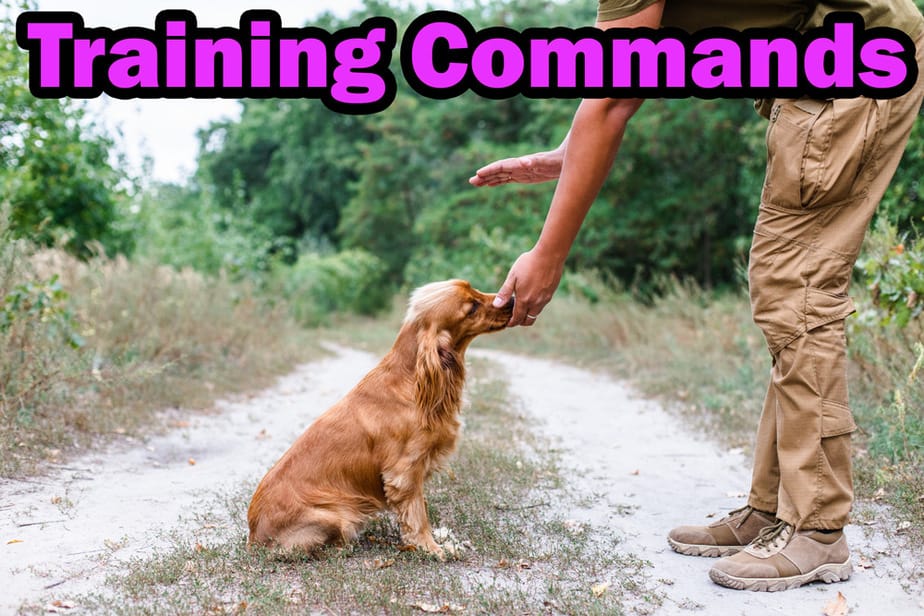
Training Commands for Puppies
Set your puppy up for success by using methods that will bring results. It’s not only about the commands you are teaching that are important, but other factors, too.
Keep training sessions quick and easy
Puppies have a short attention span. This means as owners we shouldn’t expect to hold their attention with long training sessions.
A 5-minute training session is adequate; however, you should aim to get 4 training sessions throughout the day.
When going through a 5-minute session, stick with 1 training command at a time. This means you can get 4 to 5 different commands done per day.
Or you can spend one day working on 1 or two commands, and the next day change it up.
What’s important here is to stick to 1 command per 5-minute session.
Caveat: You may find your puppy has a good attention span. If your puppy is still showing interest in the treats and is still showing eye-contact, then feel free to lengthen their sessions.
Keep puppy training sessions quiet
A puppy can get distracted easily. Be sure to do your training in a quiet area to avoid distractions.
Later on, you will want to purposely introduce noisier and more distracting environments.
Treats are the key to successfully training your puppy
Be sure to test various treats on your puppy. While your pup might enjoy eating one treat, there may be another one out there that they’ll do anything for.
Find high-value treats for training sessions and lesser-value treats for everyday rewards.
Be sure to keep them small so they can have lots of them throughout their training session.
Cut up a sausage into tiny pieces. You want to be able to give them lots of treats, so be sure to not make them too large.
You may have a puppy who doesn’t love treats, in which case read our post Puppy Doesn’t Like Treats: Why and What to do
Be consistent in your training schedule
If you’re not the only one training your puppy, be sure everyone’s on the same page with the voice commands used.
Also, be sure to consistently go through their training sessions. Ideally, you don’t want to miss any days, as these sessions are important for their mental health and will also create a stronger command/action connection.
Consider the clicker for training your puppy
A clicker can supercharge your puppy’s training. Not only can it speed up the time it takes, but it can also create a stronger command connection.
The 7 Commandments of Puppy Training
Now we’ve established some ground rules, let’s look at what you should be teaching your puppy in their first 6-months.
Here are the 7 most important commands for your puppy to know:
- Sit
- Stay
- Come
- Drop
- Rollover
- Leave it
- Drop it
Although most people include heel, we’ll be addressing puppy walking in the next of the 7 steps.
Training Your Puppy to Sit
The most well-known of dog commands, and the easiest for your puppy to learn.
We teach our dogs to sit not for a trick, but as it gives us more control over their behavior.
A puppy who is jumping on people can’t do that if they’re sitting. And because it’s an easy command to learn, it establishes the training relationship with your puppy quickly.
As it’s a natural action for a dog to make, simply saying the word, “sit” and treating or praising when they do, will establish the sit command.
To speed up this process, use a treat as a lure.
- Take a treat and put it up to your puppy’s nose.
- Move it up and back so their head follows the treat up and back. The natural response for your puppy to do is to sit.
- When their bottom touches the ground, give them the treat.
- Repeat this step a few times with treats, then use only your hand.
- When their bottom touches the ground, say “sit” and then praise.
Training Your Puppy to Stay
The obvious follow-on from teaching your puppy to sit is the stay command.
This command is a duration training command, as your puppy will be expected to stay in place until a release word has been used.
Teaching your puppy to stay will take longer than teaching them the sit command.
To teach them to stay, use the sit command, then hold up a flat palm and say, “Stay”.
Take two steps back.
If your puppy didn’t move, then praise and treat.
If they moved, try again.
Once they get the hang of a short duration, you can begin lengthening the time until you give them a treat.
For the Release Word, read on to the next command, “Come.”
Training Your Puppy to Come
This could possibly be the most important thing you can teach a dog.
Although you can use different release words for the above Stay command, we like to use Come.
The reason is we really want to teach your puppy that when you say “Come” in all circumstances, they will come.
And the more you can practice this command with them the better!
You should also add in the “Come” command during times you have your puppy’s attention. But be sure to treat when they do!
Rules for the “Come” command
- The number one rule when teaching this command is to ALWAYS have an exciting, high-value treat when they get to you.
- Say it once. If your puppy isn’t coming even though they know you have a treat, it’s time for a break from training.
- In a situation where you can’t get your puppy to come to you, stop yelling, “come”. You will remove any worth the word has and can even become a game to your dog. (If this has happened, it’s time to change the recall command and start over with a new word, like “Here.”)
- Don’t get them to Come for medicine or something they don’t enjoy doing.
It’s especially important that once your puppy has learned this command indoors and without distractions, to then begin reinforcing it in other environments.
Before proceeding to the outdoors, you want to have your puppy be an expert at stay and come without distractions.
Be sure to take your puppy to the park and practice this training routine of “Stay” … “Come” with distractions around them.
You want them to choose Come, over chasing a strange dog, for example, which also seems very enticing!
Training Your Puppy to Drop
The drop command is possibly the second easiest command to teach after the sit command.
Like when teaching the sit command with a treat lure going upwards, this time we’ll be going down with the lure.
- Get your puppy in the sitting position.
- With a treat in hand, lower your hand slowly to the floor in between your puppy’s paws. Remember to go straight down.
- When your puppy has fully dropped to the ground, give them the treat. (Don’t say drop yet!)
- You want your puppy repeating the treat lure step until they have the hang of it.
- Now do this without a treat, using your hand as the lure.
- Once laying down, treat them.
- Now you can introduce the Drop
- First, begin to say “Drop” once they have their front legs down.
- Next, say “Drop” once they’re on the way down.
- Finally, say “Drop” before they’ve even started to lay down.
- Now reinforce this training action with repeated sessions until it’s second nature to them.
Training the Rollover Command
Teaching the rollover command is a must! There’ll be many situations in which you will need your dog to help you out.
Although for most commands, you never want to get them doing a command with an outcome of doing something they don’t want to do.
However, the rollover command is an exception!
This is because when your dog is at the vet, or you need to cut their nails, or wash their bottom, or put drops in their ears, you might need their help.
Getting them to roll over can help in all these situations.
The important thing is to work on this command with high-value treats and do so often. The more they think the command will likely end in treats, the more likely they will stick with doing it.
Here is how to teach your puppy to rollover:
- Get your puppy in the laydown or drop position.
- Take a treat, the smellier the better, and place it beside their head so they turn to look at it.
- Keep moving the treat back over their shoulder.
- This will place their body onto its side.
- Once flat on their side, give them the treat. If you’re using a clicker, now is the time to use it.
- Once they have this worked out, begin luring the treat from their shoulder to their backbone.
- This action will have them on their back, but don’t stop.
- Keep moving the treat until they’ve done a full rollover.
- Click and treat them!
- Keep doing this, and once they have the action worked out, it’s time to add in the verbal cue.
- First, add in the voice command when they’ve completed the full rollover.
- Second, add in the “Rollover” command as they’re on their side.
- Finally, say “Rollover” before they’ve started the action.
- Like all training commands, you also don’t want to say the command more than once during the action.
Here is a post on the laydown command that can be taught easily with a clicker: Clicker Training: Lay Down Command.
Training Your Puppy to Leave it
The “leave it” command can come in handy when your puppy has found something of interest that you want them to leave alone. Like an old bit of sandwich on the ground, for instance.
There are a variety of methods to teach your puppy to leave it, but we like this one:
- Get a few pieces of kibble or treats and place them on the ground so your puppy can see them.
- Get a high-value treat, such as some cheese, and put it in a closed hand behind your back – hopefully so your puppy doesn’t know it’s there.
- Place your free hand over the kibble.
- When your puppy is sniffing at your hand on the floor, say, “Leave it”
- When your puppy stops sniffing or leaves your hand, then say “Yes!” and give them the cheese from your other hand.
- Repeat this step until you no longer need to use your hand to cover the kibble when you say, “Leave it”.
- If they’re going to eat the treats when you’ve said “Leave it”, then be sure to cover them with your hand before they get them. Once they’ve lost interest, say, “Yes!” and offer them the other treat.
- Start to use different treats as the bait – including high-value treats like sausage and cheese.
- Take this training outdoors and once they’re proficient in the above method, you will be able to use it on any item of interest. (As usual, be sure to have a bag of treats on you so you can reward when they comply)
Training Your Puppy to Drop it
This one is relatively easy to teach your puppy.
- Find a tug toy for you both to play with.
- When your puppy is latched onto the toy with you holding it, say “Drop it” and hold out a treat.
- When your puppy lets go of the tug toy, reward them with a “Yes!” and give them the treat.
- Repeat often!
- When you say “Drop it” stop pulling on the toy or engaging in play. But don’t let go either. Just make it less interesting.
- Progress to another toy that you don’t hold. When they have it in their mouth, bring them a treat and say, “Drop it” and offer the treat.
-
As soon as they drop it, offer lots of praise and treat them.
The Bonus Command: Training Puppy Place (Go to your bed)
Training “Place” or “Mat” or “Go to your bed” is a highly useful training command for puppy owners. It gives you a certain level of control over them and allows you to get them from out under your feet when need be. Times like when you’re cooking in the kitchen or have a visitor over.
Be sure to learn about the “Place” command at our post Place Training a Puppy: (Guided Instructions)
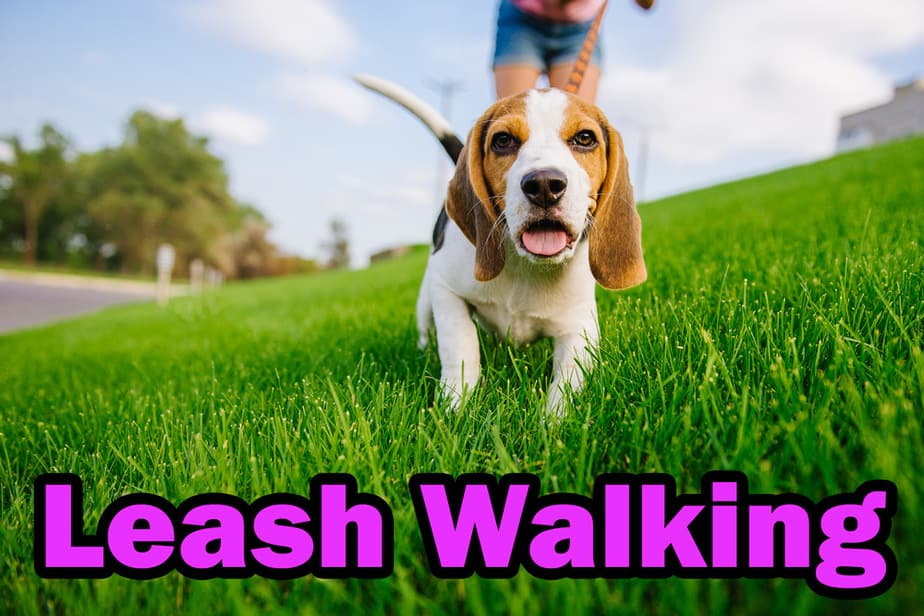
Leash Walking for Your Puppy
There’s a difference between leash walking manners and heel.
Heel should be used for the show ring or obedience classes.
Not only will your dog enjoy the walk more if they aren’t restrained to the left side of their owner, but sniffing helps relieve anxiety, lower blood pressure, and tire out a dog’s brain.
Of course, you still want them to have manners though, and not pulling on the leash is an important lesson for your puppy to learn.
Loose leash walking involves teaching our dogs not only where we want them to be, but also how to react to pressure on their leash and collar.
The steps for teaching loose leash walking are as follows:
- Decide where you’d like your dog to be while you are walking them – an imaginary “bubble” around you. For the majority of people, this will be a bubble that allows your dogs to walk on your left or right side as well as in front or slightly behind.
- When your dog is in your bubble and engaged with you, give them rewards!
- A good rule when training a new behavior is to try and reward every 5-10 seconds. Keep up the happy talk, too!
- As you progress, you’ll start to let your puppy go a few seconds longer between rewards. However, if your dog seems to struggle, go back to more frequent rewards.
You are teaching your puppy that it’s good to stay with you, and fun things happen when they choose to walk by your side.
When they pull on the leash there’s no praise or treats coming their way.
It’s also important to teach your puppy not to pull on their leash.
If your dog puts more pressure on their leash than you can control with your pinky finger, you should consider that “pulling.”
Pulling your dog back to you unfortunately works against the opposition reflex and often makes dogs lean in harder to the leash.
Instead, follow the steps below when your dog pulls on the leash.
- When your puppy is pulling, turn 180 degrees so you are going the opposite of the way you were going.
- You can talk to your dog, or use a treat to help turn them, but don’t pause and wait for them. Turn and walk!
- When your puppy catches up to you, reward at your side.
- After they catch up, you will turn 180-degrees, so you are now going back the way you started.
This exercise, with consistency, teaches your puppy to turn back to you when they feel pressure on their collar instead of leaning into it.
When your puppy is still pulling in all directions, you will need to work on standing still first.
Simply stand still (or walk in a small circle) and reward when the leash goes slack, until you can get your puppy to come back to your side.
If your puppy is seeing too many distractions, start in an area with less going on around them.
We have this post on leash pulling and although it’s about the Beagle, it’s also suited to all breeds: My Beagle Pulls on the Leash: Here’s What to Do
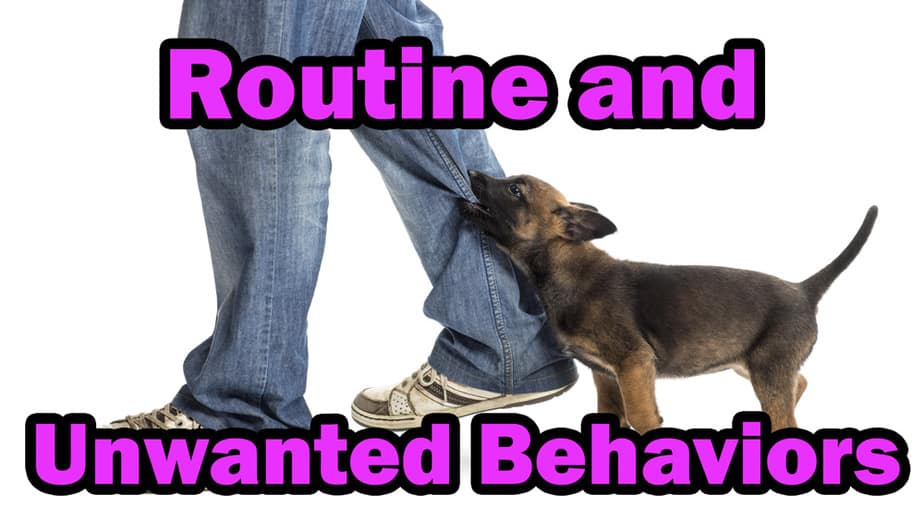
Puppy Routine to Stop Unwanted Behaviors
We threw these two together because they’re strongly linked. A solid puppy routine and schedule will drastically limit unwanted behaviors.
This is mainly due to expectations. Puppies learn fast, and they’re highly intelligent animals!
By knowing what to expect at any given time, your puppy will be less likely to be asking for things they know aren’t yet coming.
It’s also about having a routine that gives your puppy everything they need in their day. A puppy who isn’t bored or has pent-up energy will be a much better-behaved dog.
A routine with enough exercise, feeding schedules, playtime, and obedience training, will be taking care of things that can cause unwanted behavior. Such as boredom – a big factor in misbehaving puppies.
A solid and consistent routine will teach your puppy when it’s time to be calm and when it’s time to play.
The below daily puppy routine is ideal, however, it won’t suit everyone, as work can affect your ability to follow it. It’s best to find a routine that fits your lifestyle.
If you think your puppy may have a problem with aggression, please read our comprehensive guide to puppy aggression.
Daily Routine for Puppies
- Set a daily alarm for when you get up. Keep this alarm going on weekends – not forever, but at least for your puppy’s first year. You want your puppy to know that the world doesn’t start until the alarm goes off.
- Take your puppy outside for wees and poos.
- Feed your puppy their first meal of the day.
- Within 5-30 minutes, take your puppy back outside for toileting.
- Now is a good time to play with them outside. Play fetch, tug-of-war, and other running games.
- After outside play time, get some high-value treats and go through their basic training commands.
- Your puppy will now be ready for another sleep. Remember your puppy will sleep for 18 to 20 hours a day.
- After a nap, it’s always good to go outside for toileting.
- Now will be a good time for a short walk. Puppies can’t walk for extended periods of time, but it’s still important that they get exercise. Even a leash walk around your yard for 5 to 10 minutes will be enough, and you can start teaching them correct leash behavior.
- Invite a friend over or go to a friend’s house for a puppy visit. Early socialization is critical.
- Feed your puppy their second meal of the day.
- Whenever your puppy eats or plays, within 30-minutes they will need to go potty.
- Be sure to add 3-to-5 short duration training sessions throughout the day at designated times.
- Throughout the day your puppy will take naps. Be sure children in the house leave them in peace during these times.
Nighttime Routine for Puppies
- Having a good night routine is crucial to teaching your puppy how to sleep through the night.
- 30-minutes before a designated bedtime (eg. 9pm), feed your puppy their third or fourth meal of the day.
- Play with them for 10 minutes
- Go outside for toileting
- Take them to their crate or bed, and give them a cuddle goodnight
Dealing with unwanted puppy behaviors
Any physical interaction with your puppy must be positive. A negative action by you or someone in the house will only create fear in your dog.
Fear is the number one reason for bad behaviors, as the anxiety they feel will reveal itself with unwanted chewing, crying, barking, etc…
Fear can also become a catalyst for aggressive behavior.
Be sure to read our post How to Discipline a Puppy: Safe and Effective Methods
You also don’t want to scream or yell at your puppy as it will also introduce a fear response.
Although it’s best to always show the way to success with treats and praise, sometimes you will be required to enforce the boundaries.
You can use a puppy time-out in a pen or a tie-down for short periods of time to remove your puppy from an unwanted situation or behavior.
The best method of dealing with unwanted behaviors though is through redirection. If your puppy is chewing on something you don’t want them to, replace it with a toy.
If your puppy is barking a lot, then address why this might be the case. Are they bored? Are they seeing something that’s bothering them?
Your puppy wants to do the things that get them rewards. So be sure to have lots of treats in easy reach at all times, and pave the way to success by supplying them generously to your pup!
If your puppy has a fear problem, we also have these posts:
New Puppy is Shaking: Why and What to Do
Dog Anxiety Aggression: Fear Based Aggression
Is Your Puppy Scared of You? Do this…
My Puppy Doesn’t Like Me: (Why and What to do!)
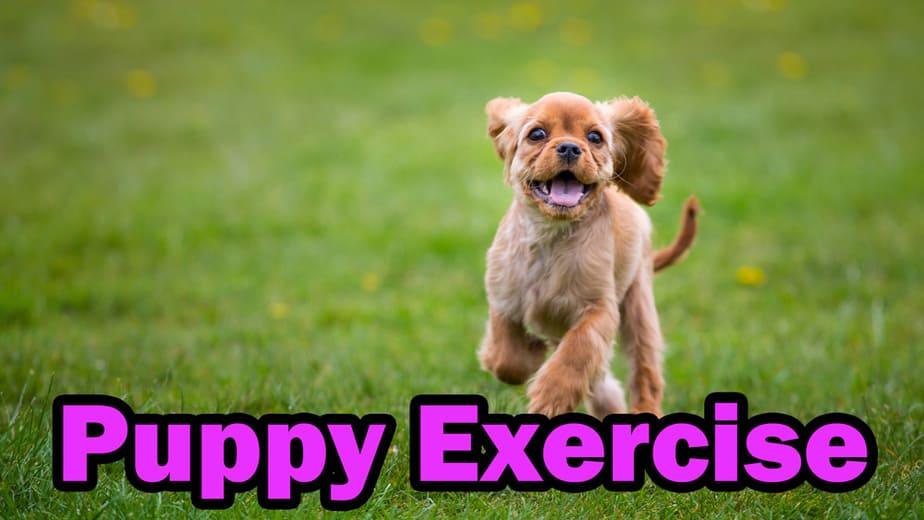
Puppy Exercise and Play
It’s important to exercise your puppy, however, this should predominantly be done through play.
Going for walks with your puppy must be kept to a minimum, as their bones are still growing, and long walks can cause damage. Also, take into account parvo, and this post might help to know when you can start taking your puppy into the big wide world for exercise: Puppy Vaccinations: When Can They Go Outside?
Use this chart to determine how long you should be walking your puppy. However, also consider the type of breed your dog is.
If you have a working dog, then they will be OK with more exercise than is shown in this chart:
| Puppy Age (months) | Exercise Time (minutes) |
|---|---|
| 1 | 5 |
| 2 | 10 |
| 3 | 15 |
| 4 | 20 |
| 5 | 25 |
| 6 | 30 |
| 7 | 30+ |
Be sure to spend lots of time playing with your puppy and provide them with a variety of toys.
Puzzle toys are also recommended to stimulate their minds and keep boredom at a minimum.
We have compiled a complete post on puppy exercise here for you to read: Puppy Exercise Guide for 2021: Walking, Running, Outside
Plus here are some more that may be of interest to you:
9 Awesome Puppy Indoor Games and Exercises
German Shorthaired Pointer Exercise Guide
Exercising Your Border Collie Puppy
Other Puppy Resources
We’ve compiled some other useful blog posts for puppy owners. We recommend you bookmark this page so you can come back in the future, in case you have any of these issues prop up.
Puppy Behavioral Posts
Puppy Lunging: At Faces, Other Dogs, People
Is Your Puppy Jumping and Ripping Clothes? Do this…
Puppy is Eating Grass: Should You Be Concerned?
Puppy Biting: When does it stop?
Puppy Doesn’t Take Naps: (Relax Your Puppy)
Puppy is Aggressive: (Guide to aggression 2021)
Puppy is Sad and Depressed: (What to do about it)
Puppy Still Not House-trained: Age expectations
Puppy Growls When Picked Up: (How to Resolve)
How to Train a Lazy Puppy: Training Strategies
Puppy Obsessed with Water: What You Need to Know
Restless Puppy: Why Your Puppy is Unsettled
Puppy Wakes Up Early: Guide To Sleeping in
Calm Down a Crazy Puppy: Hyper Zoomies!
Puppy Won’t Eat Breakfast: (Why and what to do)
Puppy won’t eat all their food: (Causes and Solution)
Your Puppy Doesn’t Bark? (Why and Expectations)
Puppy Maintenance
How to Cut Your Puppy’s Nails: A Complete Guide
Puppy Shedding: (What you need to know)
Puppy Itching: Everything to Know
Puppy’s First Cut: How old should they be?
Picking up Dog Diarrhea: on grass, in public, at the park
Puppy ears won’t stand up? (Why and What to Do)
Puppy Health and Medical Concerns
Puppy Has Hiccups: What You Need to Know
Puppy Breathing Fast When Asleep: Causes and Concerns
Getting Puppy to Gain Weight: (Weight Gain Guide)
Puppy smells like metal? (Causes and Concerns)
My Puppy is Always Hungry: Keep Feeding or Not?
When is a Puppy’s Bladder Fully Developed?
How long does puppy poop stay soft? Answered!
Puppy Takes a Long Time to Poop
Puppy Snoring – Why, and is it OK?
I dropped my puppy: (How to check your puppy)
My Puppy Has a Pink Nose: Will it Change Color?
Pointy Head Puppies: (Is the bump normal?)
Why Hasn’t My Puppy Lost Any Teeth?
Puppy Teeth Discolored: Brown, Yellow, Black
Can Dogs Break Their Nose? (Vet Answers)
Puppy Feeding Information
Soaking Puppy Kibble: How, Why, and When to Stop
Let Puppy Drink Water at Night: Yes, No, How Much?
When Can Puppies Eat Kibble? Answered!
Puppy Won’t Eat Kibble? Do This!
Dog Food Storage: Leftover kibble and wet food
Do Dogs Get Bored of Their Food? Answered!
Do Dogs Like the Taste of Kibble?
Can Kibble be Used as Treats? (Dog trainer answers)
Puppy Owner Interests
Puppy growth rate charts: (When puppies grow the most)
Puppy School vs Obedience Training: (Which One?)
Playing Rough With Your Puppy: Is it OK?
Leaving Your Dog Home Alone: (8…12…24-hours)
Giving Puppies Attention: (3, 6, and 12-months)
Will My Puppy Ever be Cuddly? Here’s the truth…
Second Dog Sleeping Arrangements
I hate my puppy, will I ever love them?
Regret Getting a Puppy: Here’s What to Do
Puppy Rage: Losing Your Temper with Your Puppy
Puppy Sleeping With You: What You Need to Know
Puppy Equipment
Martingale Collars: Everything to Know
Dog Slip Leads: (A Complete Guide 2021)
7 Proven Products for Dogs with Anxiety
Final Word
Although there are many other considerations when it comes to raising a puppy, these 7 steps will get you 99% of the way there.
The most important thing you can do as a puppy owner is to have patience. They’re like a baby in the way they’re learning their world and will make mistakes.
Giving your puppy lots of positive attention and praise, as well as love and cuddles, will ensure your puppy grows into a fantastic dog!

